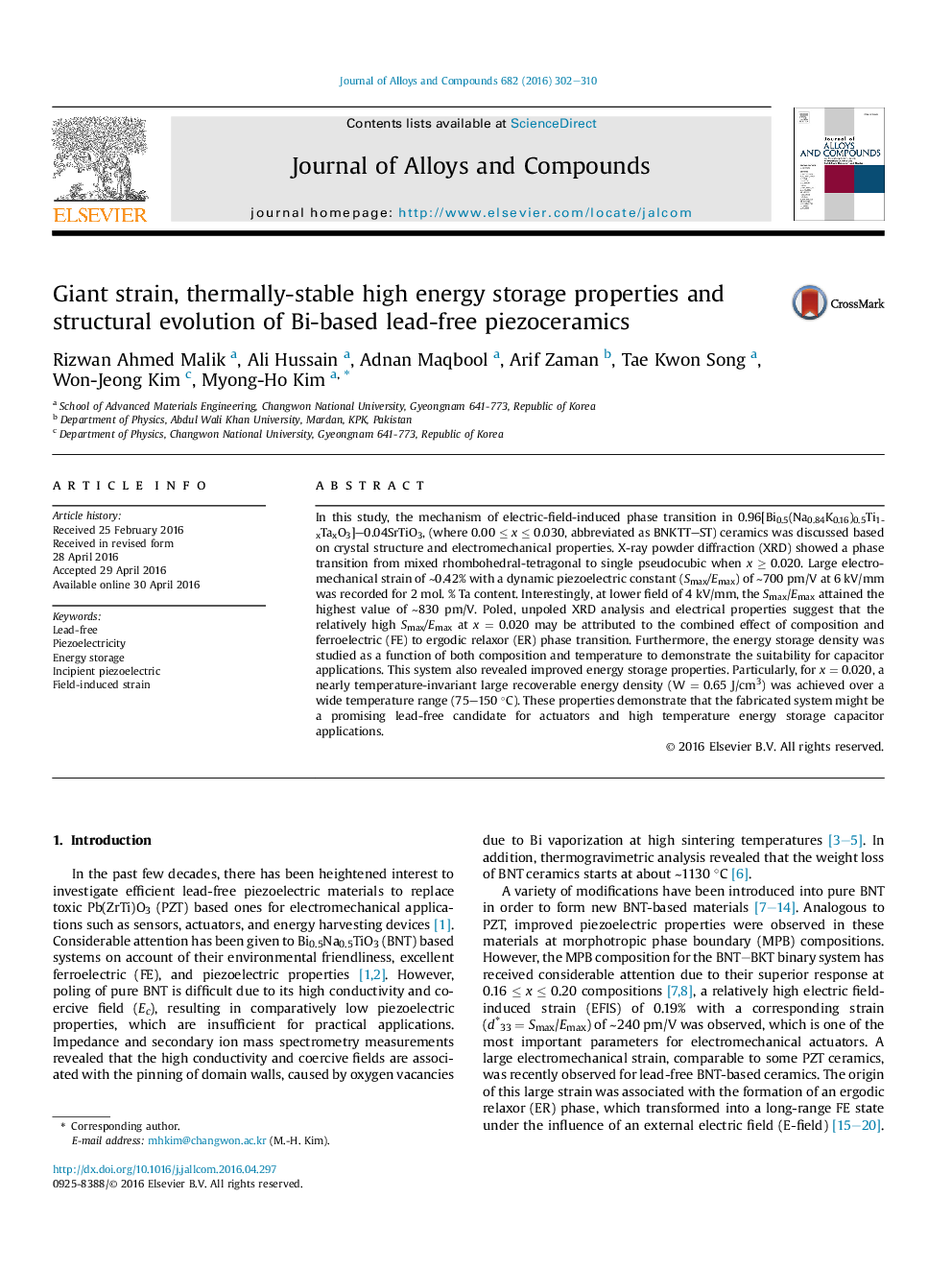| Article ID | Journal | Published Year | Pages | File Type |
|---|---|---|---|---|
| 7996963 | Journal of Alloys and Compounds | 2016 | 9 Pages |
Abstract
In this study, the mechanism of electric-field-induced phase transition in 0.96[Bi0.5(Na0.84K0.16)0.5Ti1-xTaxO3]-0.04SrTiO3, (where 0.00 â¤Â x â¤Â 0.030, abbreviated as BNKTT-ST) ceramics was discussed based on crystal structure and electromechanical properties. X-ray powder diffraction (XRD) showed a phase transition from mixed rhombohedral-tetragonal to single pseudocubic when x â¥Â 0.020. Large electromechanical strain of â¼0.42% with a dynamic piezoelectric constant (Smax/Emax) of â¼700 pm/V at 6 kV/mm was recorded for 2 mol. % Ta content. Interestingly, at lower field of 4 kV/mm, the Smax/Emax attained the highest value of â¼830 pm/V. Poled, unpoled XRD analysis and electrical properties suggest that the relatively high Smax/Emax at x = 0.020 may be attributed to the combined effect of composition and ferroelectric (FE) to ergodic relaxor (ER) phase transition. Furthermore, the energy storage density was studied as a function of both composition and temperature to demonstrate the suitability for capacitor applications. This system also revealed improved energy storage properties. Particularly, for x = 0.020, a nearly temperature-invariant large recoverable energy density (W = 0.65 J/cm3) was achieved over a wide temperature range (75-150 °C). These properties demonstrate that the fabricated system might be a promising lead-free candidate for actuators and high temperature energy storage capacitor applications.
Related Topics
Physical Sciences and Engineering
Materials Science
Metals and Alloys
Authors
Rizwan Ahmed Malik, Ali Hussain, Adnan Maqbool, Arif Zaman, Tae Kwon Song, Won-Jeong Kim, Myong-Ho Kim,
